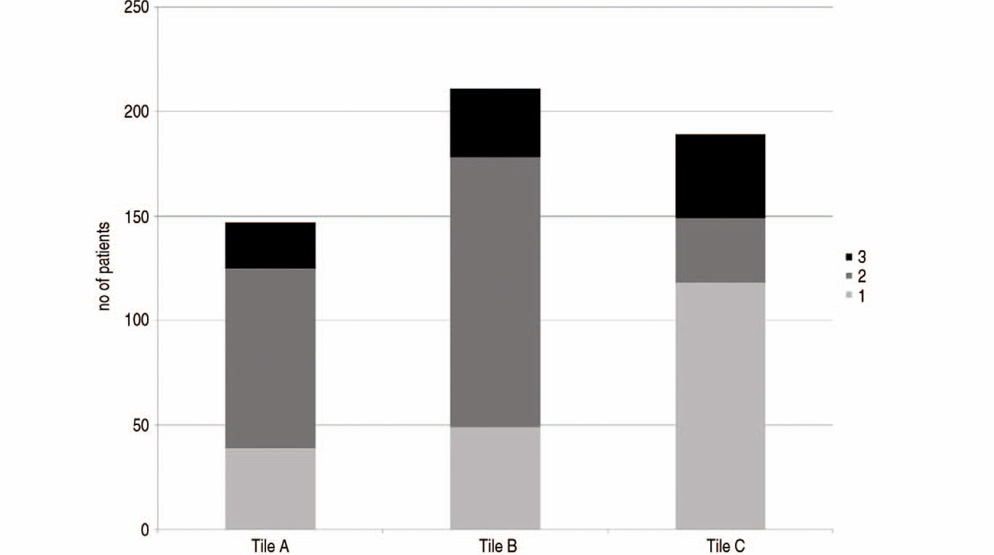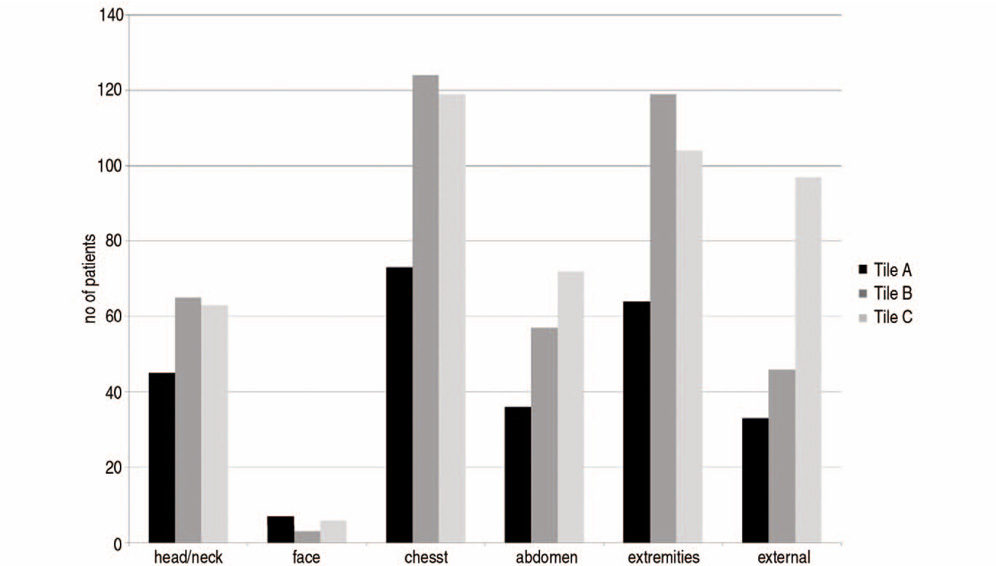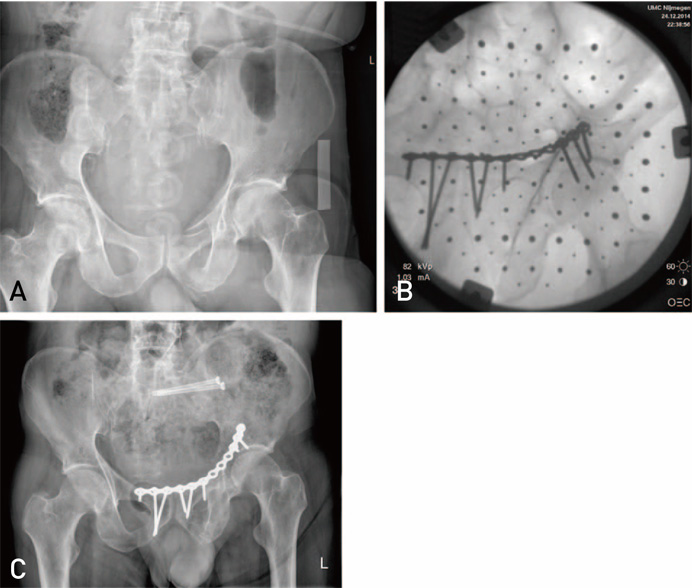Hip Pelvis.
2017 Dec;29(4):253-261. 10.5371/hp.2017.29.4.253.
Epidemiology of Pelvic Ring Fractures in a Level 1 Trauma Center in the Netherlands
- Affiliations
-
- 1Divison of Traumasurgery, Department of Surgery, Radboud University Medical Centre, Nijmegen, the Netherlands. erik.hermans@radboudumc.nl
- KMID: 2424252
- DOI: http://doi.org/10.5371/hp.2017.29.4.253
Abstract
- PURPOSE
This study was conducted to study the epidemiology, classification, treatment and outcome of a large patient group with pelvic ring injury in a level 1 trauma center in the Netherlands.
MATERIALS AND METHODS
In the period of 2004 to 2014, we encountered 537 patients with a pelvic fracture. Many of them are due to a high energy trauma and therefore many concomitant injuries are observed. Tile A fractures were seen in 137 patients (25.5%), Tile B fractures in 211 (39.3%) and Tile C fractures in 189 patients (35.2%).
RESULTS
Patients with unstable fracture types (Tile B1 and B3, Tile C) had significantly higher injury severity score, transfusion rates, need for laparotomy and definitive operative stabilization and complication rate. However, mortality did not differ significantly among Tile A, B or C fractures.
CONCLUSION
Overall outcome was good with a mortality rate of 13.6%, which is comparable with other rAelpmorotsst. half of the patients treated could directly be dismissed to their own homes.
Keyword
MeSH Terms
Figure
Reference
-
1. Gänsslen A, Pohlemann T, Paul C, Lobenhoffer P, Tscherne H. Epidemiology of pelvic ring injuries. Injury. 1996; 27:Suppl 1. S-A13-20.
Article2. Burkhardt M, Kristen A, Culemann U, et al. Pelvic fracture in multiple trauma: are we still up-to-date with massive fluid resuscitation? Injury. 2014; 45:Suppl 3. S70–S75.
Article3. Dalal SA, Burgess AR, Siegel JH, et al. Pelvic fracture in multiple trauma: classification by mechanism is key to pattern of organ injury, resuscitative requirements, and outcome. J Trauma. 1989; 29:981–1000. discussion 1000-2.4. Grotz MR, Allami MK, Harwood P, Pape HC, Krettek C, Giannoudis PV. Open pelvic fractures: epidemiology, current concepts of management and outcome. Injury. 2005; 36:1–13.
Article5. Leenen LP. Pelvic fractures: soft tissue trauma. Eur J Trauma Emerg Surg. 2010; 36:117–123.
Article6. Gansslen A, Giannoudis P, Pape HC. Hemorrhage in pelvic fracture: who needs angiography? Curr Opin Crit Care. 2003; 9:515–523.
Article7. van Vugt AB, van Kampen A. An unstable pelvic ring. The killing fracture. J Bone Joint Surg Br. 2006; 88:427–433.8. Marzi I, Lustenberger T. Management of bleeding pelvic fractures. Scand J Surg. 2014; 103:104–111.
Article9. Giannoudis PV, Pape HC. Damage control orthopaedics in unstable pelvic ring injuries. Injury. 2004; 35:671–677.
Article10. Suzuki T, Shindo M, Soma K, et al. Long-term functional outcome after unstable pelvic ring fracture. J Trauma. 2007; 63:884–888.
Article11. Hessmann MH, Rickert M, Hofmann A, Rommens PM, Buhl M. Outcome in pelvic ring fractures. Eur J Trauma Emerg Surg. 2010; 36:124–130.
Article12. Tile M. Acute pelvic fractures: I. Causation and classification. J Am Acad Orthop Surg. 1996; 4:143–151.
Article13. American College of Surgeons. Committee on Trauma. Advanced trauma life support for doctors: Student course manual. 8th ed. Chicago, IL: American College of Surgeons;2008.14. Gustilo RB, Anderson JT. Prevention of infection in the treatment of one thousand and twenty-five open fractures of long bones: retrospective and prospective analyses. J Bone Joint Surg Am. 1976; 58:453–458.
Article15. Abrassart S, Stern R, Peter R. Morbidity associated with isolated iliac wing fractures. J Trauma. 2009; 66:200–203.
Article16. Rommens PM, Hessmann MH. Staged reconstruction of pelvic ring disruption: differences in morbidity, mortality, radiologic results, and functional outcomes between B1, B2/B3, and C-type lesions. J Orthop Trauma. 2002; 16:92–98.
Article17. Majeed SA. Grading the outcome of pelvic fractures. J Bone Joint Surg Br. 1989; 71:304–306.
Article





